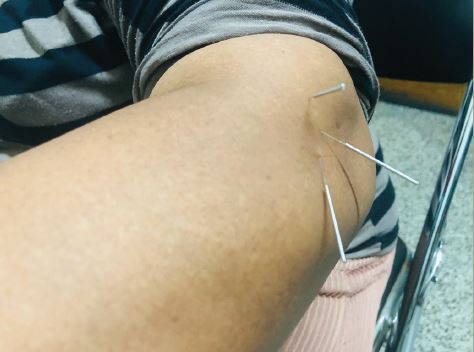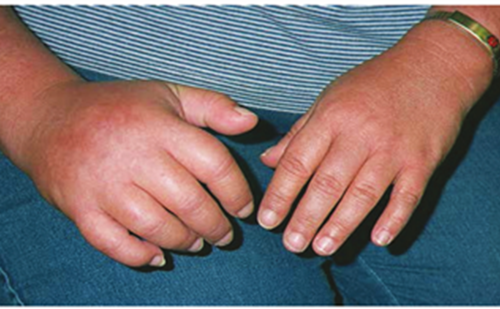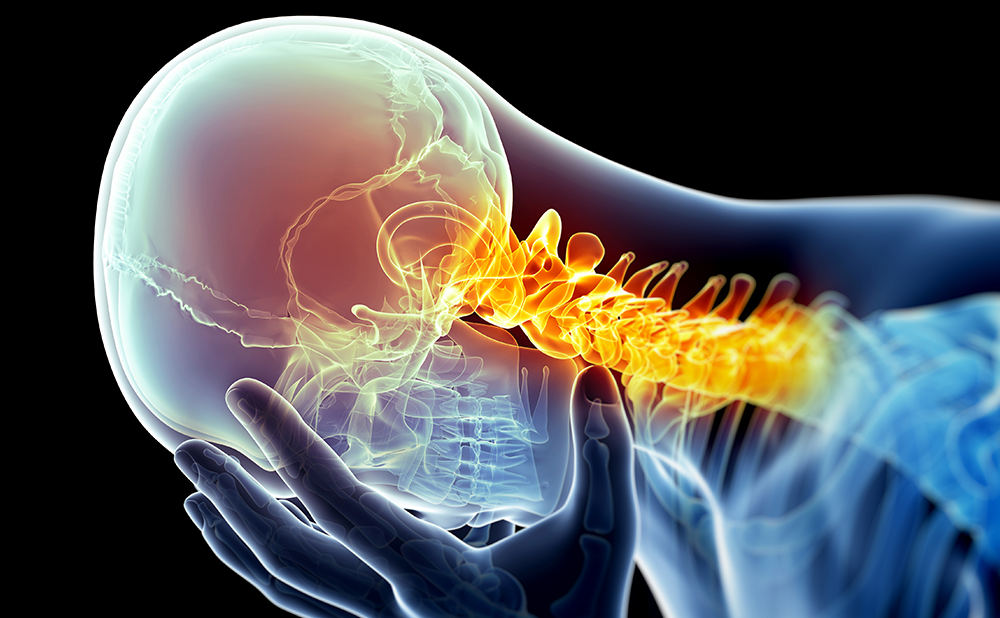Opioids are a treatment option for moderate to severe pain in appropriately selected patients who have not responded to non-opioid therapies.1 Extended-release opioid formulations can be especially beneficial for the management of chronic moderate to severe pain because they release opioid over a sustained period, resulting in prolonged duration of action (eight to 24 hours for oral formulations) (see Figure 1).2,3 The potential benefits of extended-release formulations include sustained pain relief, the possibility of lengthening dosing intervals, reduction in euphoric effects compared with immediate-release formulations because of the slower rise in peak plasma morphine levels and lower peak levels, pre-emptive treatment of pain, potential for reduced side effects without the peak-related toxicity of immediate-release formulations, reduced end-of-dose pain and withdrawal symptoms, reduced pill burden, ease of compliance, better sleep and general improvement that come from better functionality, and an improved quality of life.4–7 Extended-release opioid formulations, however, can be especially attractive to opioid abusers because of the relatively large amount of opioid per unit dose compared with that in immediate-release formulations.5 In response to the rising rates of opioid abuse and unintentional deaths from drug overdose, the US Department of Health and Human Services Centers for Disease Control and Prevention has encouraged pharmaceutical manufacturers to modify opioid formulations to make them more difficult to tamper with or to block the effect of the opioid if they are crushed, or dissolved and injected.8 Opioids can be abused by a variety of methods and routes of administration, including simple one- or twostep methods such as swallowing intact or crushed/chewed product or inhaling crushed or solubilized product, and more complex methods such as multistep extraction processes to solubilize an active ingredient to be administered by injection or other routes.5,9,10 A study among US college students indicated that the most frequent routes of administration for non-medical use of prescription opioids were oral (97%) and intranasal (13%).11
Several strategies, which can be employed alone or in combination, have been proposed for the development of opioid formulations that are less attractive to drug abusers while addressing the need for analgesics for patients with moderate to severe pain. These strategies include:
• inclusion of a sequestered opioid antagonist that is released and is bioavailable only upon product tampering (crushing, extraction, and solubilizing);
• physical barriers that resist crushing and/or extraction with common solvents or form a viscous substance on contact with a solvent, making intravenous use difficult;
• inclusion of a sequestered aversive agent that is released only upon tampering; and
• development of inactive prodrugs that require absorption into the gastrointestinal tract for conversion to the active opioid compound.5,7,12
EMBEDA®—An Opioid Agonist with a Sequestered Opioid Antagonist
EMBEDA® (morphine sulfate and naltrexone hydrochloride) Extended Release Capsules are indicated for the management of chronic moderate to severe pain when a continuous, around-the-clock opioid analgesic is needed for an extended period of time. EMBEDA consists of pellets of extended-release morphine, each with a sequestered core of naltrexone, an opioid antagonist (see Figure 2).13,14 When EMBEDA is taken orally as directed, the morphine is available to provide analgesia while the naltrexone remains sequestered.13–16 Naltrexone is a potent competitive μ-opioid receptor antagonist used clinically in the treatment of alcohol and opioid dependence at a recommended oral dose of 50mg once daily for most patients.17,18 The amount of naltrexone in EMBEDA is much lower than that used clinically for alcohol and opioid dependence: the morphine sulfate:naltrexone hydrochloride ratio in EMBEDA is 25:1. EMBEDA is available in the following strengths: 20mg/0.8mg, 30mg/1.2mg, 50mg/2mg, 60mg/2.4mg, 80mg/3.2mg, and 100mg/4mg.13 If EMBEDA is tampered with by crushing, the naltrexone is designed to be released to mitigate the morphine-induced euphoria sought by opioid abusers.13–16
Morphine Pharmacokinetics
The formulation of EMBEDA was based on that of KADIAN® (morphine sulfate extended-release) Capsules, the pellets of which have an inert core instead of sequestered naltrexone.13,19 The results of a single-dose study indicated that EMBEDA was bioequivalent to KADIAN with regard to rate and extent of morphine absorption.13 When EMBEDA was taken with highfat food, the rate and extent of morphine absorption were decreased but total bioavailability was not affected.13 The rate and extent of morphine absorption were similar when pellets from EMBEDA capsules were sprinkled on apple sauce and swallowed without chewing compared with when EMBEDA was consumed intact under fasting conditions.16 These results established that EMBEDA can be taken without regard to meals and, as an alternate method of administration, capsule contents can be sprinkled over apple sauce and consumed by patients who have difficulty swallowing the intact capsule.13,16
Co-ingestion of alcohol and opioids is contraindicated because of the potential for additive life-threatening sedative and respiratory effects and the reported disruption by alcohol of the extended-release mechanism of some opioid formulations, which can result in the release of potentially fatal amounts of opioid.20 A study conducted in healthy, opioid-naïve adults (n=32) to determine the relative bioavailability of morphine and naltrexone when EMBEDA was taken with 240ml of 4, 20, and 40% alcohol compared with water revealed that there was no drug interaction with 4 and 20% alcohol. When EMBEDA was administered with 40% alcohol, extended-release properties were maintained but the maximal plasma concentration (Cmax) was doubled (15 versus 8ng/ml), and the time to reach that concentration (Tmax) was shortened from nine to four hours. Naltrexone sequestration did not appear to be affected by co-administration of alcohol at any of the doses tested in the study.
In a multicenter, double-blind, cross-over pharmacokinetic study in patients with chronic moderate to severe pain from osteoarthritis of the hip or knee, patients (n=113) were titrated with KADIAN (period 1) until adequate analgesia was achieved (at doses of 20–160mg twice daily), then randomized to either KADIAN or EMBEDA at the dose established in period 1 for a 14-day treatment (period 2). After a seven-day open-label treatment period with KADIAN (period 3), patients crossed over to the alternate treatment (EMBEDA or KADIAN) for a second 14-day treatment period (period 4).15 EMBEDA displayed similar morphine steady-state pharmacokinetics to KADIAN with comparable plasma morphine exposure over a 12-hour interval (area under the curve [AUC]0–12 mean ratio 0.93, 95% confidence interval [CI] 0.824–1.069).15 The results also demonstrated that EMBEDA maintained similar analgesic efficacy to that provided by KADIAN (see Figure 3).15 During treatment, pain intensity and Western Ontario and McMaster Universities (WOMAC) Osteoarthritis Index (pain, physical function, and composite index subscale) scores were statistically similar.15 There were no significant differences between treatments in change from baseline scores for WOMAC pain, physical function, and composite index subscales.15 There was no positive correlation of time-matched plasma naltrexone and/or 6-β-naltrexol concentrations with pain scores, indicating that negligible amounts of naltrexone that may be present in the blood had no impact on the extent of analgesia experienced by patients.15
Efficacy of EMBEDA in the Management of Chronic Moderate to Severe Pain
The analgesic efficacy of EMBEDA was determined in patients (n=547) with chronic moderate to severe pain from osteoarthritis of the hip or knee over a 12-week study period.13,21 Patients were first titrated to an effective dose of EMBEDA during an open-label treatment period; patients who achieved analgesia, defined as a pain intensity score of ≤4 on an 11-point scale (0 = no pain, 10 = worst pain) and at least a two-point drop from screening baseline pain intensity score, were then randomized to continue treatment with EMBEDA or placebo for a 12-week maintenance period.13,21 Compared with placebo, EMBEDA maintained significantly superior analgesia as measured by mean change in diary average pain scores from randomization to the end of study.13,21
In an open-label study to assess safety, 465 patients with chronic moderate to severe pain received EMBEDA for up to 12 months. The mean percent change from baseline pain intensity at all visits (except week 1 for least pain), as measured by least, worst, average, and current pain, was statistically significant.22 This 12-month study is one of the longer outcome studies on opioid analgesia in the literature.
Naltrexone Pharmacokinetics
Naltrexone undergoes extensive first-pass metabolism to its primary metabolite 6-β-naltrexol, which also has opioid antagonist properties, albeit at one-twelfth to one-fiftieth the potency of the parent compound.23 As plasma concentrations of 6-β-naltrexol are generally greater than plasma naltrexone concentrations,23 it is possible to obtain information about low concentrations of naltrexone by also measuring 6-β-naltrexol.
When EMBEDA was taken as directed, the naltrexone remained sequestered; plasma naltrexone concentrations remained below the limit of quantification (4.0pg/ml) for more than 78% of patients (n=72) who had received multiple doses of EMBEDA (20–160mg twice daily) over two 14-day treatment periods.15 However, most patients had at least one quantifiable 6-β-naltrexol plasma concentration (range 0.3–520pg/ml),15 indicating the presence of trace amounts of naltrexone at levels that are clinically insignificant.
Of 465 patients who received EMBEDA for up to one year for chronic moderate to severe pain, 93 (20%) also participated in a pharmacokinetics substudy. Of these 93 patients, 21 (23%) had plasma naltrexone levels greater than the 4.0pg/ml limit of quantification at some time during the study. Of 444 samples analyzed, 49 (11%) had plasma naltrexone concentrations above the limit of quantification. The median plasma naltrexone concentration was 10.1pg/ml (range 4.03–145pg/ml).22 There was no evidence of naltrexone accumulation during the study, nor was there any significant correlation between EMBEDA dose and age or sex of the patient.22 There was no evidence of opioid withdrawal in those patients with the highest naltrexone levels.
Naltrexone Release When EMBEDA Is Tampered with by Crushing
A study in healthy volunteers (n=23) compared the oral bioavailability of naltrexone released after pellets from a 60mg capsule (60mg morphine sulfate/2.4mg naltrexone) were crushed for at least two minutes in a mortar and pestle with that of an oral solution of naltrexone hydrochloride at the concentration present within EMBEDA.24 The results indicated that naltrexone was fully released when pellets of EMBEDA were crushed, and had similar bioavailability to that of oral naltrexone hydrochloride solution.13,24
Pharmacodynamic Effects of Crushed EMBEDA
A study of non-dependent recreational opioid abusers (n=32) assessed whether naltrexone released from crushed pellets of EMBEDA taken orally would mitigate the morphine-induced euphoria effects sought by drug abusers.14 Maximum pharmacodynamic effects (Emax) on primary outcome measures (Addiction Research Center Inventory [ARCI]– Morphine Benzedrine Group [MBG], Cole/ARCI stimulation—euphoria and abuse potential scales, and subjective drug value) observed after oral administration of crushed and intact EMBEDA were significantly less than after administration of morphine sulfate solution (p<0.001).14 The results for the primary outcome measure of drug-liking, as measured by a visual analog scale (VAS), are shown in Figure 4.14 Morphine sulfate solution was more desirable than crushed or intact EMBEDA: 87.5% of patients had some degree of reduced drug-liking after receiving crushed EMBEDA.13,14
Opioid abusers may crush and dissolve extended-release formulations to inject or snort.7 The effects of injecting crushed EMBEDA pellets could not be directly tested because of the potential danger of injecting talc excipients or insoluble particles generated during crushing.25 Preparations of morphine alone and morphine plus naltrexone at the concentration present in EMBEDA were administered intravenously to healthy, non-dependent recreational opioid abusers (n=28) to simulate an intravenous abuse model with crushed EMBEDA; the morphine plus naltrexone combination resulted in 71% of subjects reporting a reduction in euphoria compared with morphine alone.13,26 In the intravenous study, as in the oral study, drug-liking and high were reduced after administration of morphine and naltrexone compared with administration of morphine alone.26
Conversion to EMBEDA
Patients on other oral morphine formulations can be converted to EMBEDA by administering half of the patient’s total daily oral morphine dose as EMBEDA every 12 hours or administering the total daily oral morphine dose as EMBEDA every 24 hours.13 There is a lack of systematic evidence about converting to oral morphine sulfate from other opioids. Physicians are advised to refer to published relative potency data and, in general, to give half of the estimated equianalgesic daily morphine demand as the initial dose.13 The higher incidence of adverse events (AEs) that may occur initially during conversion tends to diminish substantially over time. In both the 12-week study and the 12-month safety study, AEs occurring during the titration periods were more common than during the maintenance periods.21,22
Safety Profile of EMBEDA
The presence of naltrexone in the EMBEDA formulation did not appear to alter the safety profile of EMBEDA compared with KADIAN.15 In phase II and III studies in patients with chronic moderate to severe pain, the most common AEs (frequency ≥10%) were those typically experienced by patients treated with opioids, i.e. constipation and nausea.13 In the 12-week study, the most common treatment-related AEs were constipation (titration phase 30%, maintenance phase 7%) and nausea (titration phase 19%, maintenance phase 11%).13,21 In the long-term safety study, which is described above, the most common AEs were constipation (31%), nausea (22%), vomiting (8%), somnolence (7%), and headache (7%).13,22
Assessment of opioid withdrawal was performed because of the small amounts of naltrexone and 6-β-naltrexol that had been observed in the plasma of some patients treated with EMBEDA.13 In the 12-week study, no patient taking EMBEDA as directed experienced signs of opioid withdrawal as assessed using the Clinical Opiate Withdrawal Scale (COWS).21,27 During the 12-month safety study, the presence of naltrexone did not precipitate opioid withdrawal; at the highest naltrexone concentrations there was no evidence of opioid withdrawal as measured by the COWS. Five patients who had COWS scores consistent with moderate opioid withdrawal had not taken EMBEDA as directed.22
Summary
Interventions to stem opioid abuse are needed at many levels, including careful biopsychosocial evaluation, functional outcome monitoring, promotion of assessment and monitoring of patient opioid abuse risk, prescription monitoring, and adequate control of the drug supply chain. EMBEDA is the first product in a new category of opioids that incorporate features designed to diminish the abuse liability of the drug when tampered with and taken orally or by injection. EMBEDA, a long-acting opioid that provides effective pain relief in patients with chronic moderate to severe pain, is designed to reduce euphoria and the subjective ‘high’ associated with abuse when it is tampered with by crushing or solubilization.
Products such as EMBEDA represent a valuable advance when used within a comprehensive approach to pain management. EMBEDA delivers durable analgesia to patients with chronic pain while having features that mitigate the euphoria associated with prescription opioid abuse. Future large-scale epidemiological studies are needed to determine whether formulations such as EMBEDA will prove to be less attractive for abuse in the real-world setting. ■













